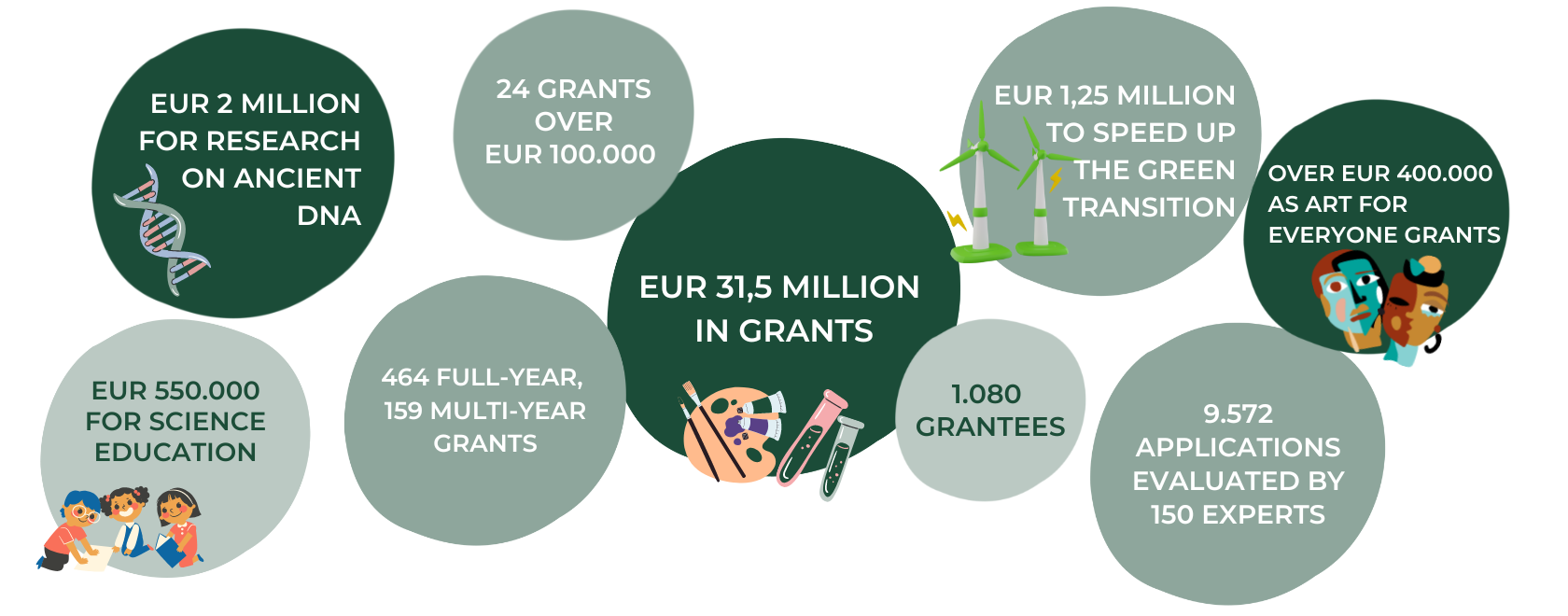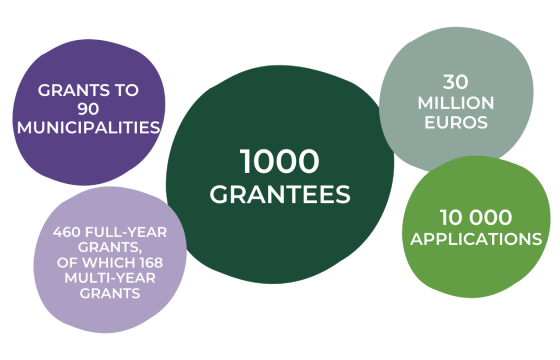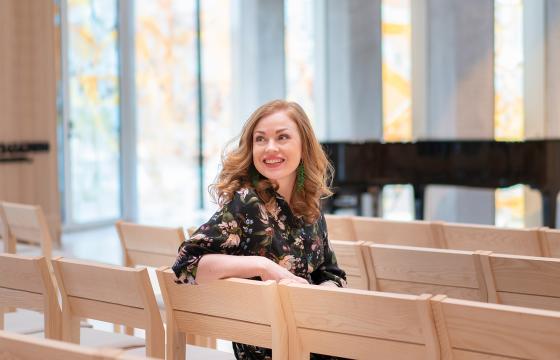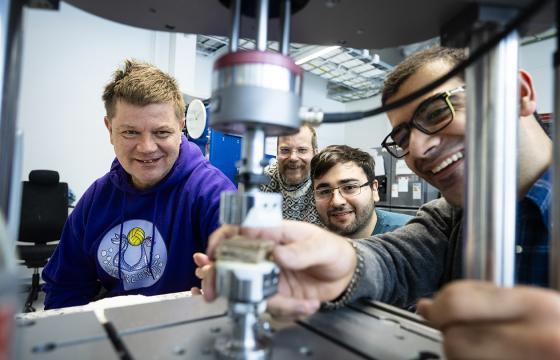
The October round is the largest of the Finnish Cultural Foundation’s four annual application rounds. This year it led to grants totalling EUR 31.5 million. All in all, the Finnish Cultural Foundation supports the sciences, the arts and culture in Finland with nearly EUR 60 million each year.
In October, the foundation received nearly 10,000 applications, of which 1,080 were successful. Of these, the sciences accounted for 61% and the arts for 38%. The special-purpose grants of the application round were this time focused on the sciences. “Research on ancient DNA received the biggest grants of the year, totalling EUR 2 million. In contrast, we also reached towards the future by funding the development of new materials and technologies that aim to speed up the green transition with EUR 1.25 million,” says the Chair of the Cultural Foundation’s Board of Trustees, Hanna Hiidenpalo.
On an annual level, the distribution between the sciences and the arts evens out thanks to the Cultural Foundation’s many arts-focused projects and special-purpose grants.
The Cultural Foundation has been aiming to increase the number of full-year and multi-year grants, which allow grantees to work full-time on their academic or artistic pursuits. The Foundation now granted 464 full-year grants and 159 multi-year grants, of which seven were for four years.
On average, one in ten applications were successful. The acceptance rate varies depending on the discipline, however, because the distribution of grants is determined by the purposes specified by the Cultural Foundation’s donors.
“Many of our donors have wished to support various medical fields. This is why we are able to give out significant grants, such as the EUR 250,000 received by the team led by Anu Kauppinen, PhD (University of Eastern Finland) for research on the development of medications against age-related macular degeneration,” explains Juhana Lassila, the foundation’s Director of Cultural Affairs.
The number of arts applications the foundation receives is clearly on the rise. “We receive huge numbers of applications particularly in the field of visual arts, where there seems to be a great need for funding,” Lassila says.
The grant applications submitted to the Finnish Cultural Foundation are processed by panels formed by experts in the field in question, who change annually. This year, applications were reviewed by around 150 experts. “We encourage our experts to pick the applicants they find convincing, to whom they would like to give an opportunity. The decisive factors are quality and the appeal of the subject,” says Lassila.
The Cultural Foundation has amassed assets totalling nearly EUR 2 billion through small and large donations received over eight decades. The basic capital was obtained through a national fundraising campaign in 1938, to which 170,000 Finns donated. Grants are paid out according to purposes specified by various donors; hence, the Foundation is able to support highly diverse initiatives in various fields of academia, arts and culture.
Nine research projects working to unlock the secrets of ancient DNA
The Cultural Foundation supported research on ancient, environmental and sedimentary DNA with special-purpose funding totalling EUR 2 million. Studies of ancient DNA have broadened the scope of methods available to archaeologists and our knowledge of the history of the human race. Environmental and sedimentary DNA, on the other hand, which lies in the layers of the earth, provides data on past and present ecosystems.
“Research related to ancient, environmental and sedimentary DNA is a quickly developing field around the world. We wanted to provide this major funding to promote the field in Finland and to encourage scientists from various disciplines to work together,” explains the Finnish Cultural Foundation’s Secretary General, Antti Arjava. “Ancient layers contain data on topical phenomena, such as climate change, pandemics and biodiversity loss.”
The funding was shared between nine research projects. The team led by Petri Auvinen, PhD, is studying post-ice age ecosystem changes (University of Helsinki, EUR 400,000); the team led by Professor Antti Sajantila is studying ancient peoples and the microbes they carried (University of Helsinki, EUR 400,000); and the team led by Sanna Huttunen, PhD, studies the diversity of plants, animals, insects and biocoenoses in Finland between the Stone Age and now (University of Turku, EUR 240,000).
Read the article: Ancient DNA samples can equip us for the future
Green transition demands new materials and technologies
Another major theme of the October round of applications provides EUR 1.25 million in funding to research relating on materials and technologies promoting the green transition. “Accelerating the green transition is becoming a matter of urgency. The research topics may seem opaque to a layperson, but they might affect all of our everyday lives in the future,” says Secretary General Arjava.
Funding was granted to six projects, including the research conducted by the team led by Antti Karttunen, PhD, on materials that can turn heat loss into electricity (Aalto University, EUR 200,000); the team led by Jussi Toppari, PhD, for developing higher-efficiency solar cells (Nanoscience Center at the University of Jyväskylä, EUR 250,000); and the team led by Yagut Allahverdiyeva-Rinne, PhD, on the development of biohybrid technology using photosynthetic bacteria and sustainable materials (University of Turku, EUR 200,000).
Read the article: The green transition requires new materials and technologies
Major grants for forest bathing and the cultural history of the Baltic Sea
Twenty-four grants with sums exceeding EUR 100,000 were awarded. Recipients included Heikki Hyöty, M.D., and his team for research on the prevention of allergies using daily forest baths in early childhood (University of Tampere, EUR 200,000); Professor Anu Kantele and her team for research on the effectiveness of faecal microbiota transplants in preventing repeated urinary tract infections (University of Helsinki, EUR 170,000); the Helsinki Baroque Orchestra for a project on Baltic Sea cultural history of the eighteenth century (EUR 110,000); and musician Harri Lidsle for the Brass Academy 2.0 education project (EUR 100,000).
Subjects related to visual impairment received just over EUR 500,000, with Jonna Heynke, MPhil, receiving EUR 28,000 for writing the memoirs of a guide dog, and Rajataide ry from Tampere receiving EUR 30,000 for audio descriptions of contemporary art for the visually impaired.
Subjects related to endangered Finnish minority cultures include the PhD thesis of Lindsay Doran, who received a grant for a comparative study of education policies within Finnish Sámi and North American Indigenous residential school systems (EUR 28,000). Suvi West is examining the status of Sámi women, the tension points related to indigenous artistry, and the search for the power of foremothers for her book (EUR 28,000).
Science Education, Art for Everyone and Eminentia as special purpose grants
Science education for children and adolescents was a special theme for the first time in the October round. All in all, eight grants related to the topic were awarded, totalling EUR 550,000. They went to universities, associations and foundations around Finland, for purposes including field courses at research stations in Lapland (University of Helsinki, EUR 96,000), the development of the outdoor classroom concept (Lastu School of Architecture and Environmental Culture in North Savo, EUR 72,000), and the development of multimedia mathematics clubs (MAOL ry, EUR 50,000).
Art for Everyone grants (previously known as Art for Institutions) have been given out since 2014. Their aim is to increase the opportunities of people in need of care or support to experience high-quality art. This year the sum total of these grants was just over EUR 400,000. Pyry-Pekka Jaala, M.Ed., and his team received EUR 25,000 for producing a rap music project for adolescents at risk of marginalisation; and Elina Airikkala, M.A., received EUR 33,000 for implementing the lap rya method among the aged, those lacking language skills and the disabled.
The Cultural Foundation’s EUR 25,000 Eminentia grants are intended for reflection on and sharing of one’s own scientific or artistic life’s work and the experience gained from it to benefit others, in written form. Among the eight Eminentia grantees were Professor emeritus Matti Kortteinen for writing a book on the combination of diverse materials in empirical social studies; Marjo Kuusela (member of the Academy of Finland) for writing about her thoughts on her life in dance and theatre; and Professor emeritus Tapio Vapaasalo for collecting his experiences related to design, communication and teaching.
Next application round in March
The Cultural Foundation will next be accepting applications in March 2023. Applications are invited for instrumental loans and mobility grants, as well as Art2 grants, which are intended for high-quality art projects that strive to reach larger audiences. Publishers can apply for grants for translating world literature into Finnish.


